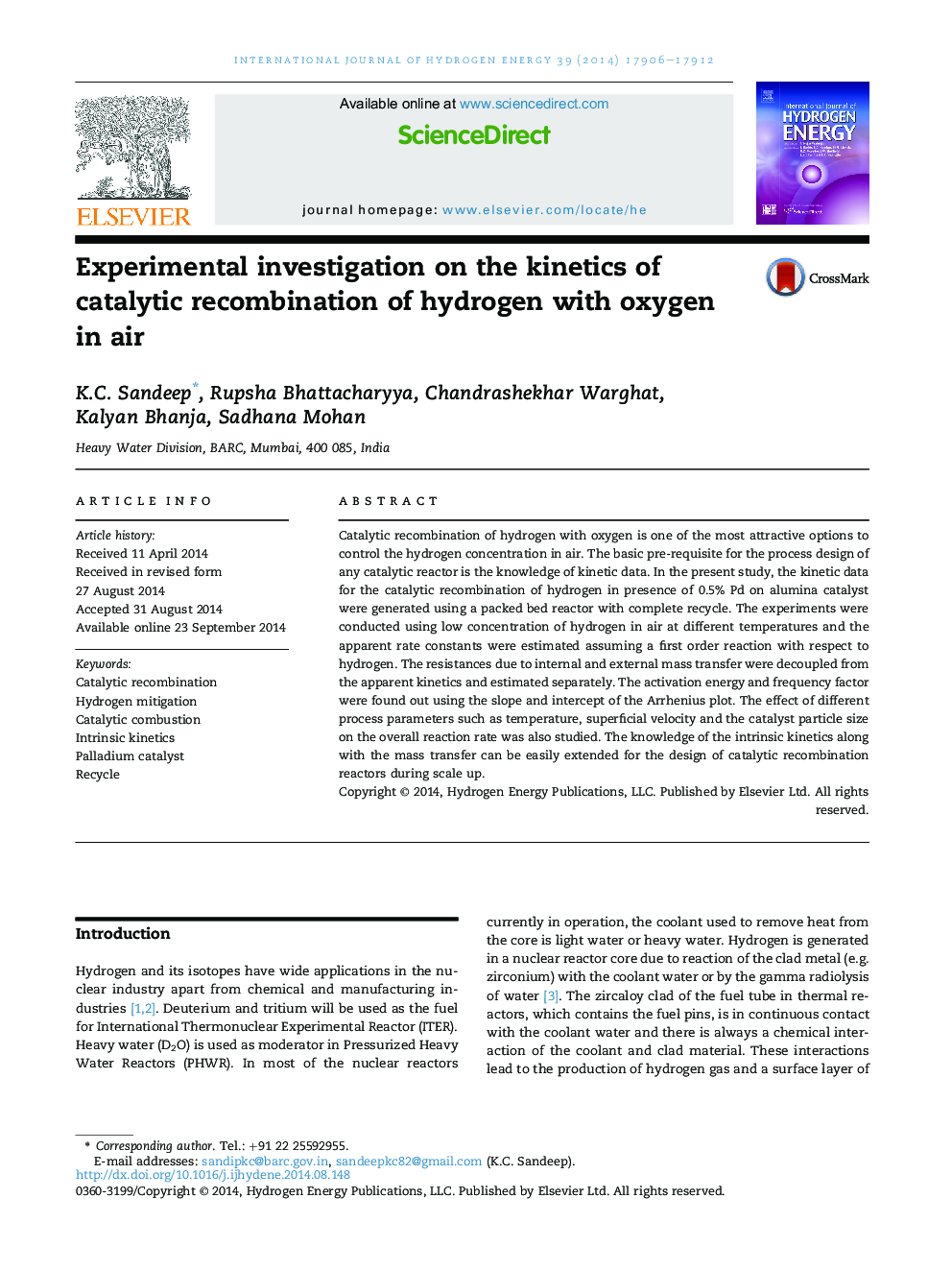| Article ID | Journal | Published Year | Pages | File Type |
|---|---|---|---|---|
| 1271887 | International Journal of Hydrogen Energy | 2014 | 7 Pages |
•Studied the kinetics of H2–O2 recombination in a packed bed reactor with recycle.•The activation energy and frequency factor are estimated from intrinsic kinetics.•Investigated the effects of mass transport limitations on apparent kinetics.•Temperature range in which the rate controlling regime changes, was identified.•Scale up is possible with the knowledge of intrinsic kinetics and mass transfer.
Catalytic recombination of hydrogen with oxygen is one of the most attractive options to control the hydrogen concentration in air. The basic pre-requisite for the process design of any catalytic reactor is the knowledge of kinetic data. In the present study, the kinetic data for the catalytic recombination of hydrogen in presence of 0.5% Pd on alumina catalyst were generated using a packed bed reactor with complete recycle. The experiments were conducted using low concentration of hydrogen in air at different temperatures and the apparent rate constants were estimated assuming a first order reaction with respect to hydrogen. The resistances due to internal and external mass transfer were decoupled from the apparent kinetics and estimated separately. The activation energy and frequency factor were found out using the slope and intercept of the Arrhenius plot. The effect of different process parameters such as temperature, superficial velocity and the catalyst particle size on the overall reaction rate was also studied. The knowledge of the intrinsic kinetics along with the mass transfer can be easily extended for the design of catalytic recombination reactors during scale up.
Graphical abstractFigure optionsDownload full-size imageDownload as PowerPoint slide
